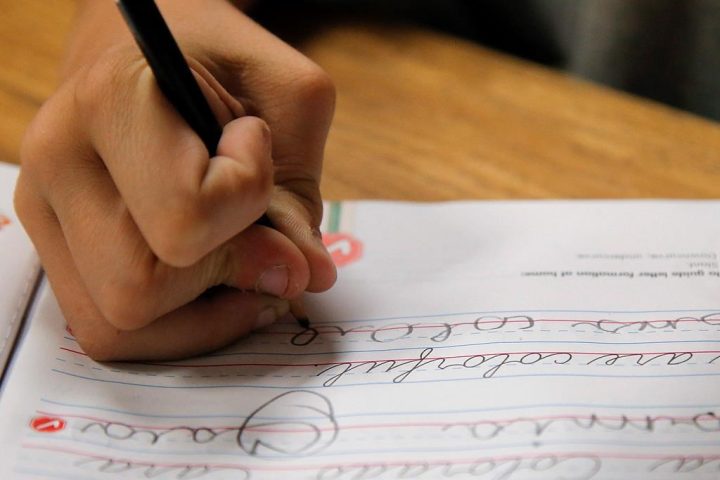Cursive is making a comeback.

Relegated in 2006 to an optional piece of learning in Ontario elementary schools, cursive writing is set to return as a mandatory part of the curriculum starting in September.
Education Minister Stephen Lecce said it is about more than just teaching students how to sign their own name.
“The research has been very clear that cursive writing is a critical life skill in helping young people to express more substantively, to think more critically, and ultimately, to express more authentically,” he said in an interview.
“That’s what we’re trying to do, to create a very talented generation of young people who have mastered the fundamental skills, like reading, writing, and math, that are the foundations of any successful productive life in the country.”
Ontario’s new language curriculum, set to be in place for the new school year, introduces a host of changes, including a renewed focus on phonics. Many of the curriculum additions can be traced back to a report last year from the Ontario Human Rights Commission, which said the province’s public education system was failing students with reading disabilities and others by not using evidence-based approaches.
“If we want to boost reading instruction, we have to embrace some of those time-tested strategies that have worked for generations,” Lecce said.
“A return to phonics and, for example, cursive writing is another example where the government is leaning into the evidence and following the voice of many parents who wanted us to really embrace those practices that for generations have worked.”
- Mississauga man dead after road rage causes 6-vehicle crash: OPP
- Ontario NDP sets ultimatum for legislature keffiyeh ban, threatening to defy rules
- Muslim human rights activist in need of kidney finds help from Jewish community
- S&P/TSX composite rises, Nasdaq leads Wall St. rally after tech earnings
The curriculum reintroduces cursive writing as an expectation starting in Grade 3. That’s welcome news for language education experts.
“I think it is long overdue,” said Shelley Stagg Peterson, a curriculum, teaching and learning professor at the University of Toronto’s Ontario Institute for Studies in Education.
“Cursive should never have been taken out of the curriculum.”
There isn’t a lot of research specifically on cursive writing, Peterson said, but the work that has been done shows that it not only teaches students the skill of writing that script in and of itself, but it helps to reinforce overall literacy.
“The more that young writers, beginning writers, are using their hands, they’re using another modality to form the letters, that kinesthetic reproduction helps them to think more about the words that they’re writing,” she said.
“So it actually reinforces their reading, as well as their writing.”
Hetty Roessingh, a professor emerita at the University of Calgary’s Werklund School of Education, said cursive is a valuable skill.
“For note taking, for being literate, for engaging with the demands of school and civil society, your hands matter and you need to be able to write,” said Roessingh, who specializes in the role of handwriting with quality writing outcomes.
“The computer will not take that over.”
Handwriting with a printing style, as opposed to cursive, costs more working memory each time the pencil lifts off the page, she said.
But, she said, a key to success is ensuring there are enough supports so educators can be able to teach cursive properly.
“You even need more than just to buy the resources and have it on the curriculum,” Roessingh said.
“Teachers have to understand why it’s been introduced and that it’s important and why it’s important and really buy in, and then they need the support and the resources to do the job.”
The four major teachers’ unions have slammed the timing of the new language curriculum, being made available for teachers to learn for September with less than two weeks before this school year ends.
The Elementary Teachers’ Federation of Ontario has said the changes are vast and is calling for a minimum two-year implementation period.
“The province’s expectation that educators will be ready to teach the overhauled language curriculum beginning this September is absurd,” ETFO president Karen Brown wrote in a statement.
“Their rushed rollout proves just how out of touch they are with classroom and educator realities. Curriculum documents aren’t recipes. You don’t simply download them and follow the instructions, using a list of prescribed ingredients. Curriculum is complex.”
Lecce said the government signalled changes to the language curriculum last year, after the human rights commission report was published.
“If we work together as we have for the last year … to embrace this change and to build that capacity, I’m absolutely confident that educators will be set up for success,” he said.



Comments